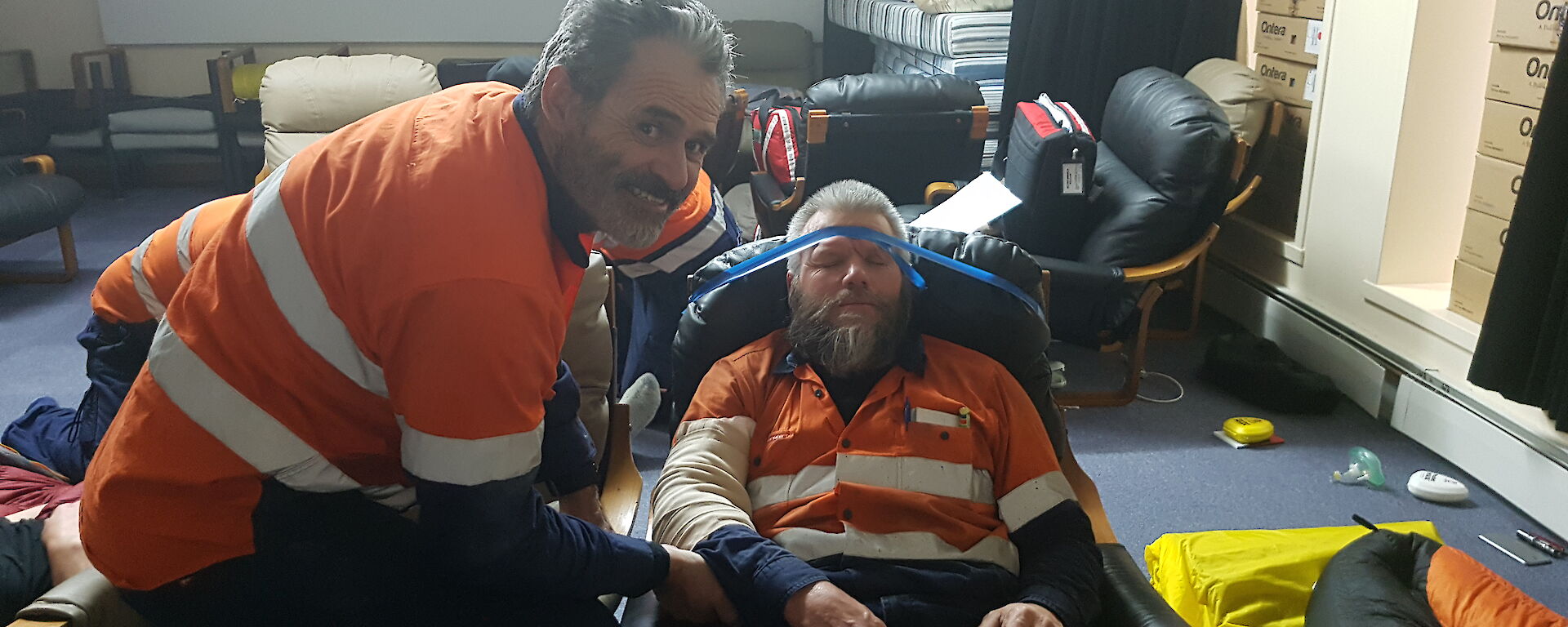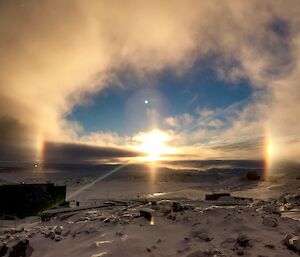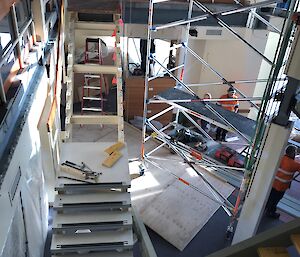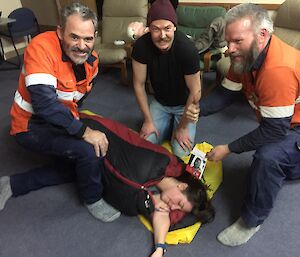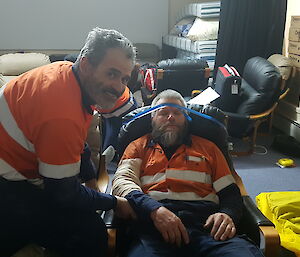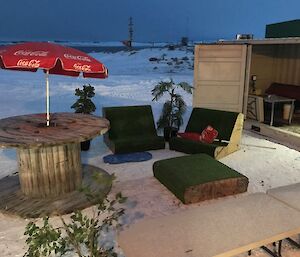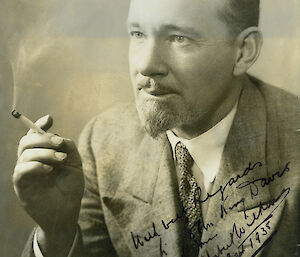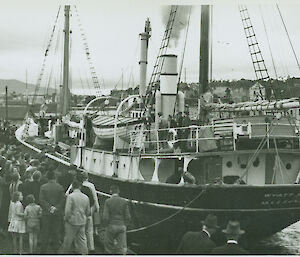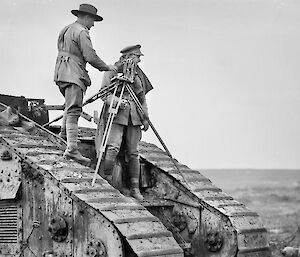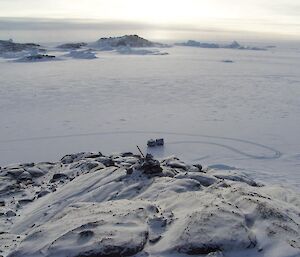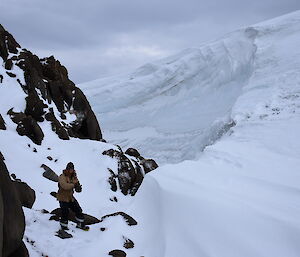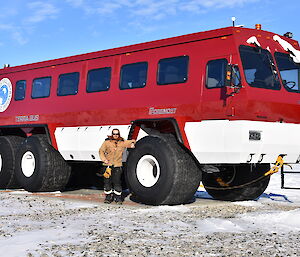As I write this update today, the snow is falling outside, and not just the usual light flurry but a significant dumping. I thought we were on the driest continent on earth but here at Casey we have had quite a lot of snow over the last couple of weeks, so I’m not sure we fit that generalisation. (If only I’d bought my skis … and there was a chair lift or cable car somewhere nearby!)
I’m also sitting at my desk in a jacket, gloves and beanie as someone (I blame Scotty) has turned off the heating in the Ops building to undertake repairs. But, a little hardship is character building and drives us to contemplate what it might have been like for the initial explorers, Mawson, Shackleton, and Wilkins (the most under-rated of explorers and adventurers, of whom Misty writes below). We live in the lap of luxury in today's Australian Antarctic stations in comparison with the living conditions they experienced. A visit to the field hut at Browning Peninsula a few weeks ago probably gave a better example of their Antarctic experience; we arrived to find it -10 degrees inside the hut and the water frozen solid in the kettle on the stove (and this in March, what will we find in July or August?). So, surviving a few goose bumps in my office is nothing; I'll stop complaining and count myself lucky.
The weather in Antarctica is frequently astounding, and not just the cold and wind. This week we were lucky enough to see sun dogs and diamond dust as the sun rose over the horizon and the light made magical work of the ice crystals floating in the air. (See Zach’s photo below). Sun dogs are an optical phenomena where glowing spots, or mock suns, form on the horizon either side of the sun within a halo; they are created by sunlight refracting off plate shaped ice crystals in cirrus clouds. While diamond dust is a cloud composed of tiny ice crystals that forms near the ground and during daylight, bright sparks of light can be generated as the sun hits the ice crystals. This makes the air sparkle, much like a diamond ring can sparkle if the light hits the ring at the right angle. Simply magical.
I digress. Back on track…! This week at Casey (apart from weather phenomena) we have been cracking on with the red shed refurbishment, end of summer report writing and audits, and emergency response continuation training -to name just a few. Splinters (the old Casey bar) has been partially demolished, the roof portion, and returned from whence it came (built from scrap wood from Wilkes decades ago, the wood has been returned to Wilkes for the hut’s fire, warming expeditioners visiting over the winter). And we are now without stairs in the Wallow area, with the old removed and the structure for the new being installed. For the next few weeks we have a slightly longer walk to get upstairs. Progress is constant and every day we return to the red shed and are surprised by the changes.
We had a lovely BBQ on Saturday night, chef’s night off, so our super slushies (Shane and Scotty, with some station support) prepared a delicious BBQ cooked outside in the Casey beer garden. Unfortunately (but to be expected) the temperatures dropped and the beer started to freeze, so we retreated inside to finish up the meal.
All is well here, loving life in Antarctica. And we look ahead to a unique but contemplative Anzac Day next Wednesday. Lest we forget.
Rebecca (Casey SL)

